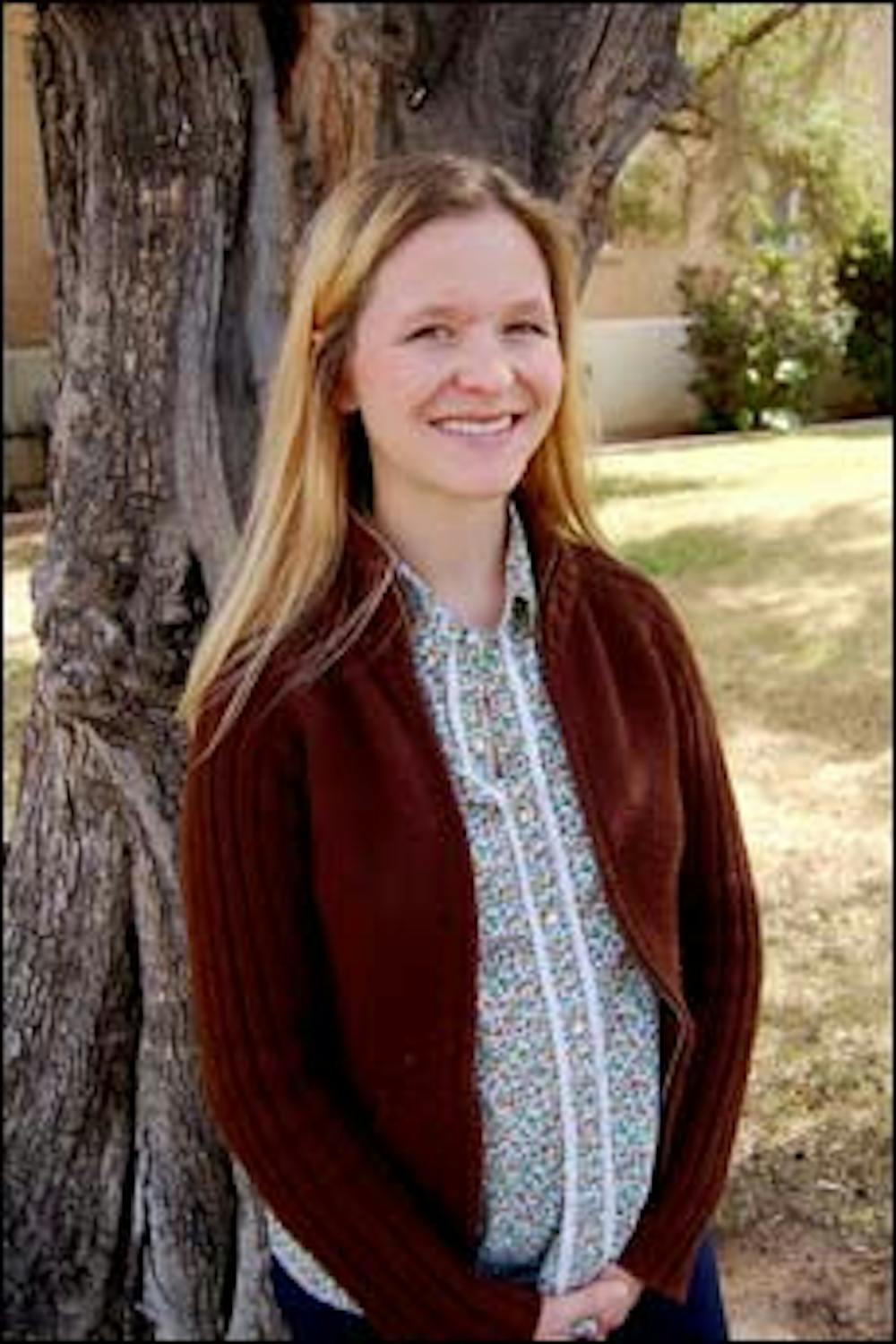Inside an old elementary school, where most people saw nothing but abandoned classrooms and deserted playgrounds, the Empty Space Theatre was born.
Housed at Mitchell Elementary School, in the neighborhoods west of ASU,the new space became an instructional classroom for the theater department during the day, and was used by the school of communication on nights and weekends.
The name, Empty Space, came from a quote by British theatrical director and producer Peter Brook, who said, "I can take an empty space and call it a bare stage."
Now, years later, the theatre is on the move to a fancy new home. The ASU Performing and Media Arts facility, opening in March at the Cornerstone shopping center on the northeastern corner of Rural Road and University Drive, will house Empty Space and the Prism Theatre, a new venue for performances from the theatre department. There will also be studios for dance, video and film.
The last performance at the original Empty Space is "Finding the Vagina Warrior," a piece by ASU communications studies doctoral student Kim Ware.
Ware says the play is about a girl from a conservative background who struggles with how to play a role in the popular "Vagina Monologues," a feminist play.
This is the first time Ware's own work has been presented, though she has performed at the Empty Space before.
"It's a great space," she says. "You can move it around in lots of ways to manipulate it and feel comfortable."
Ware says the play is based on her master's thesis, which investigates how performers are affected by their performances.
"It's a good example of the legacy of the Empty Space," she says.
Most of the plays presented at the theater are based off of research, she says. Performances for each season are picked by the theater's artistic director from a pool of student applications.
When Fred Corey, an associate dean of the University College and the director of the School of Interdisciplinary Studies, first came to ASU in 1986, he immediately felt an attachment to the Empty Space performance venue.
"What we do isn't entertainment," says Corey. "We interrogate culture."
Corey says a performance like "Finding the Vagina Warrior" proves the original vision still lives on.
"In communication studies, performance gives us an opportunity to see culture enacted," he says. "Students who participate engage texts directly, and see how it affects social and cultural change."
Jennifer Linde, a lecturer in performance studies and the current artistic director of Empty Space, agrees.
"We explore the messages embedded in aesthetics," she says.
Linde says performances at the Empty Space are almost always original, and scripts are generally a result of months of research, including academic reading and focus groups. She says the pieces are designed to engage the audience, and sometimes utilize a "trigger script" that confronts charged issues and leads people to engage in discussions they may not normally have.
According to Linda Park-Fuller, an assistant professor at ASU who has spent 36 years in various performance studies and is a former artistic director of the Empty Space, the performances help bridge the gap between scholarly research and the general public.
"Empty Space is almost like a laboratory," she says. "Performers have a chance to share emotion with the audience in exciting and accessible ways."
Park-Fuller says that the Empty Space reflects a move toward more variety in performance studies, and that the new space will offer even more opportunity for growth.
Linde says she has been working with the building's designers to ensure the new space will maintain the intimacy that made the old venue so special.
"There's an intimacy in that room that's very powerful," she says. "I'm going to miss it."
Reach the reporter at benjamin.horowitz@asu.edu.




